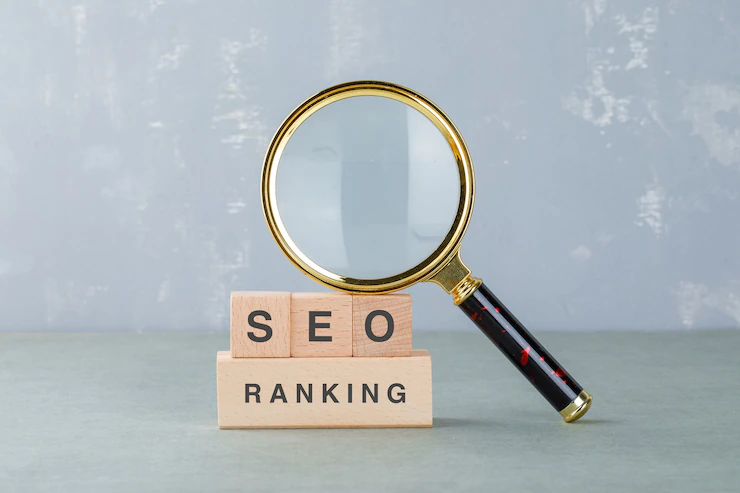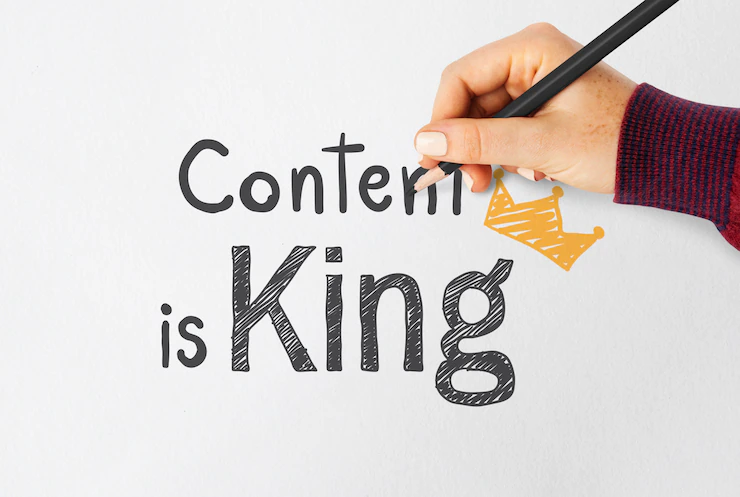How To Optimize Images For SEO? Easy Steps To Improve Site Speed And Ranking
Jul 15, 2025

Jul 15, 2025

Jul 12, 2025

Jul 12, 2025

Jul 12, 2025

Jul 10, 2025

Jul 07, 2025

Jul 07, 2025

Jul 04, 2025
Sorry, but nothing matched your search "". Please try again with some different keywords.


Search engine optimization or B2b SEO may not be as pretty as Instagram or as flashy as TikTok.
However, it is one of the most fundamental pieces of any B2B SEO trends for digital marketing strategy.
Not only is it one of the best ways to attract and bring new prospects to your B2B website, but it is also a strategy that’s proven to improve conversion.
That said, SEO is constantly evolving. So, for any B2B marketers to maintain the ever-changing conditions and the requirements of SEO, keep reading the following B2B SEO trends, which are trendy for 2022.
Let’s first ‘what is B2B SEO’.
B2B SEO Trends optimization is a digital marketing strategy that is designed for improving the B2B website page ranks.
But these B2B SEO trends are terms are working differently?
In general B2C terms, SEO tends to work based on your incorporating keywords. But in B2B the decision-making factors are working.
Based on the key decision-making factors, the ranking will go to improve.
So why do B2B agencies need SEO? Here are the reasons for it.

Despite SEO rankings, major companies believe that SEO is all time the essential aspect of bringing the traffics. B2B SEO trends will increase the value of your content.
And b2b SEO strategies will boost the viewer’s attention.
Here are some of the effective b2b SEO strategies you can try to boost your traffics.
So let’s start to know the latest B2B SEO Trends for your business.
Today, AI allows you to generate rank-worthy content ideas for your site, make SEO-friendly outlines and even automatically copy itself to hasten your B2B SEO strategies and other activities.

Gone are the days of manual labor in creating every piece of B2B SEO content.
AI-powered b2b keywords generator and content tools and apps for SEO copywriting will likely play a critical role in helping your marketing team churn out content more quickly since they can speed up the draft-writing and outlining stages of the content creation process.
They are nothing more than a starting point and supporting tool for your content marketing teams. Your content creators and marketers are the ones who will ensure that website content shines and effectively speak to your target audience and attain your marketing goals.
In terms of B2B SEO strategies and Trends, one thing that will always be true is that high-quality content will get better rankings.

In particular, for B2B SEO, if you’re not using the EAT framework for your content, you’re missing out a lot.
Short for Expertise, Authoritativeness, and Trustworthiness, EAT is all that Google and other search engines look for in content. All search engine algorithms follow this EAT principle. It means that only well-written and valuable content can truly stand the test of time.
Take note, however, that EAT doesn’t just apply to blog posts or web articles. It can also be a ranking factor for landing pages.
So if your homepage or sales pages are not following the EAT principle, you may be missing out on those valuable prospects and potential customers.
Did you know over 80% of the world’s population has a smartphone and uses it to get things done?

With over 6.6 billion smartphone users worldwide and most internet traffic coming from mobile users, you want to make sure that your website is compatible with mobile search.
Even Google emphasizes having a mobile-first website and using it as a B2B SEO Trends
And another ranking factor since March 2021. This shift from desktop to mobile means that poor-performing mobile websites or websites not optimized for mobile will harm your rankings.
So, make sure that your B2B website will work intuitively and responsively on any mobile screen.
Related: How To Make Your Website Rank Online
Before, we saw advances in search engines that understand queries and page content better.

One factor that made an impact on understanding search intent is BERT, or bidirectional encoder representations from transformers, in short.
BERT has now used all types of queries. And it also helps Google to understate the voice queries and respond accurately to provide better results.
So, to implement this trend in your B2B SEO strategies and trends, you need to optimize your keywords with search intent in mind.
By knowing what your audience is trying to get out of a specific query, you can better tailor your content to fit their search.
Last year, Google rolled out a new update known as the Passages Algorithm.

As previously mentioned, Google is already good at finding answers to common queries in well-organized content that addresses the question.
But with these passages of the Google update, Google now ranks long-form of content that addresses a question in a passage within the context of a much a bigger topic. It also made Google wiser at ranking web content that isn’t well-organized.
In this case, it’s vital to optimize your B2B content for semantic search, search intent, and LSI keywords to help you rank your content passages rank higher.
Statistics show that long-tail keywords account for more than 70% of all web searches.

And yet, although this is one of the best ways to outrank your competitors, long-tail keywords are mostly underused.
Adding long-tail keywords can help add context to your content while supporting a better conversion rate and providing more value to your readers and this is one of the latest B2B SEO trends.
To use long-tail keywords, focus on questions, particularly the how-to questions. Google suggestions are a good source for long-tail keywords.
You must also optimize your content for related questions or keywords and write content that provides valuable and genuine solutions for your readers.
Last year, Google returned its focus to web performance with its Page Experience update.

This update evaluates page experience based on a set of signals— safe browsing, mobile-friendliness, no intrusive interstitials, and the Core Web Vitals, which are the valuable aspect of this Page Experience update.
For those who don’t know, the Core B2B SEO trends where Web Vitals include-
Google will expand the SERPs and reward websites that utilize these standards. So, this is something you must capitalize on.
How are B2B SEO trends different from B2C?
Yes, when your targeted audience types are different, you have to apply various tricks to grab their attention.
| No. | B2B SEO | B2C SEO |
| 1 | In the B2B business, your audiences are the product vendors. | In B2C, the business is selling goods and products directly to the consumers. |
| 2 | B2B takes repeated sessions to complete the entire sales cycle. | For B2C, this time is only a few days. |
| 3 | B2B SEO tactics focus on outreach and earning backlinks. | For b2 C, content marketing is focused, and making the backlinks for improving the backlinks are the main work areas. |
| 4 | The low volume of campaigns is a high-quality performance indicator. | B2C campaigns are focused on sales and are targeted to generate more traffic every month. |
| 5 | Many managerial steps are involved in the B2B SEOs. | Only consumers and the interactions through the contents are the main goals. |
And there you have it!
As technology advances and search engines like Google gets more intelligent, your latest B2B SEO trends and tactics should also adapt to compete for the top organic search results.
There’s no harm in trying the trends mentioned above to boost your SEO tactics to your advantage.
So, if SEO isn’t at the top of your 2022 B2B marketing strategy yet, start now and implement the above trends to bring your website higher in rankings, one step at a time.
Additionals
Mashum Mollah is the feature writer of SEM and an SEO Analyst at iDream Agency. Over the last 3 years, He has successfully developed and implemented online marketing, SEO, and conversion campaigns for 50+ businesses of all sizes. He is the co-founder of SMM.
View all Posts
How To Optimize Images For SEO? Easy Steps To...
Jul 15, 2025
Quickwin: Your Gateway To Premium Online Ente...
Jul 12, 2025
Top 7 HVAC Marketing Mistakes That Are Tankin...
Jul 12, 2025
8 Top AI Market Research Tools For Fast And A...
Jul 12, 2025
How A Smart Seo Agency Uses Guest Posting To ...
Jul 10, 2025

